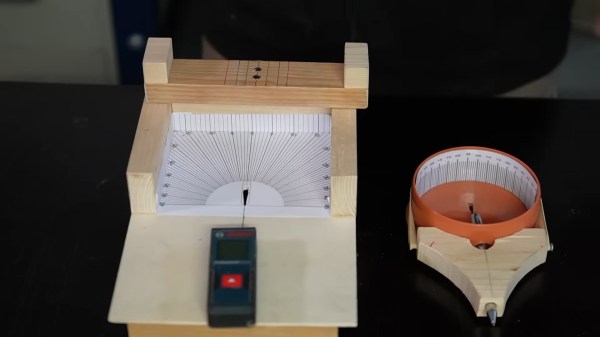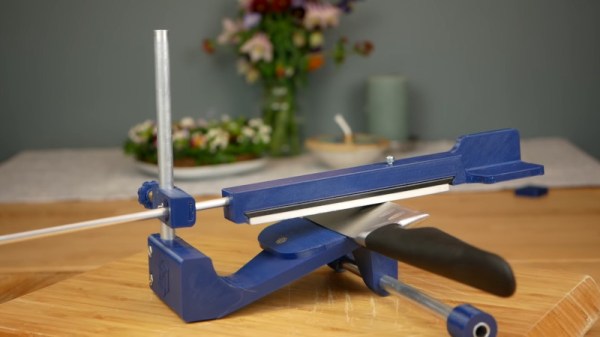Sometimes you absolutely, positively need to know the angle of the cutting edge on a knife. When you do, the best tool for the job is a laser goniometer, and [Felix Immler] shows us three different ways to build one. (YouTube)
The underlying principle of all three of these builds is to project reflected laser light off a knife blade onto a scale going from 0-45˚. [Immler] shows a basic demonstration of this concept with a hinge toward the beginning of the video (after the break). Blades with multiple bevels will reflect light to each of the appropriate points on the scale.
The simplest version of the tool is a printed PDF scale attached to a wooden box with a hole for the blade to pass through. The next uses a large pipe end cap and a drilled-out piece of wood to create a more manageable measuring tool. Finally, [Immler] worked with a friend to design a 3D printed goniometer with differently-sized adapters to fit a variety of laser pointers.
Now that you’re ready to precisely sharpen your blades, why not sharpen this guacamole bot or try making your own knife from raw ore?
Continue reading “Goniometer Gives You An Edge At Knife Sharpening”













